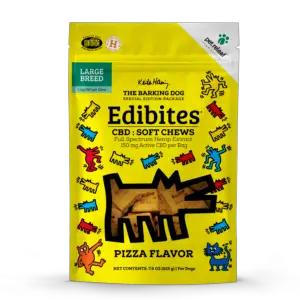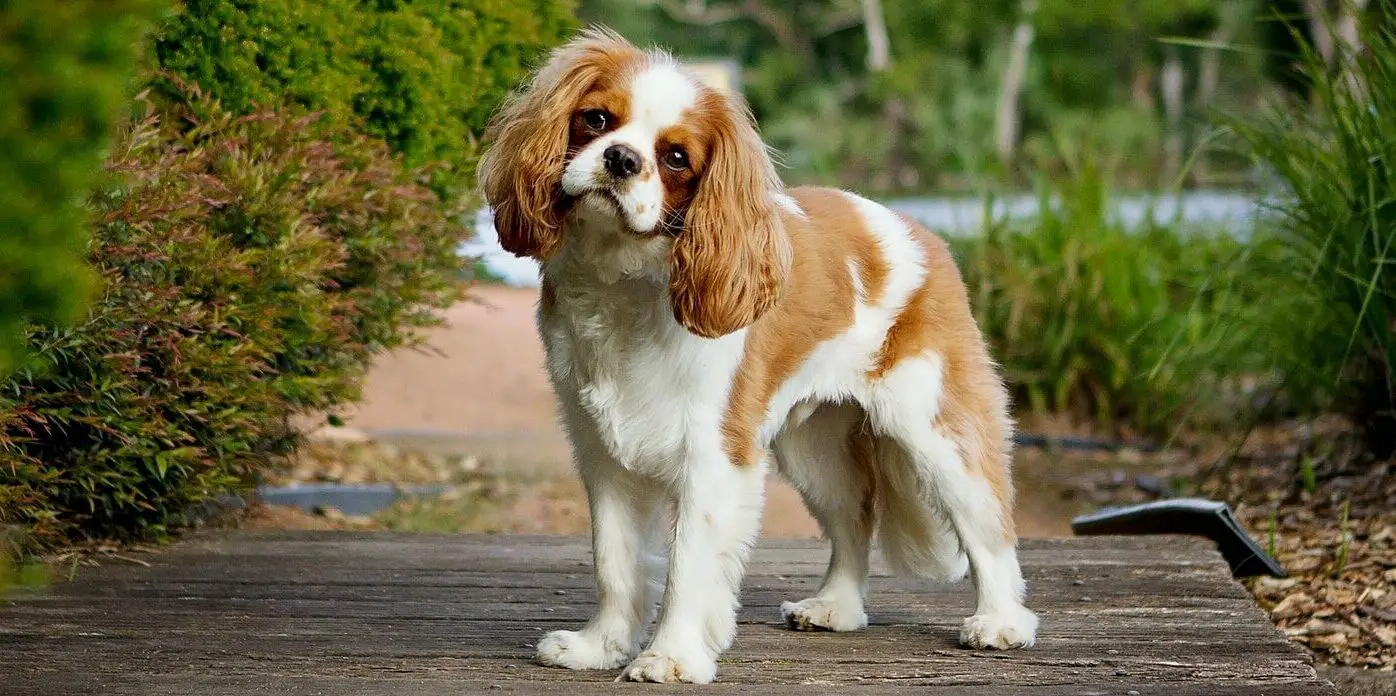
Key points
- Canine alopecia is a condition where a dog loses an abnormal amount of hair partially or completely. This condition doesn’t depend on the breed, size, age, or gender of the animal, but some breeds are genetically more predisposed to it;
- The most common causes of hair loss in dogs are allergies, improper function of the endocrine system, and infection;
- The symptoms of alopecia include thinning hair, red and inflamed skin, and constant itching;
- There is no way to eliminate dog hair loss, but you can help the pet shed it healthily by feeding the pet quality food or adding apple cider vinegar, lemon juice, and different oils to its diet.
- VitaminA is also very effective in treating hair loss in dogs, as it helps with irritation, swelling, redness and shows quick results.
Dog owners put up with cleaning their pets’ hair all the time, which sometimes can be frustrating. Dog hair is responsible for regulating the pet’s body temperature and protecting its body from UV radiation. Shedding is natural for dogs, but it can be difficult to know when to start worrying about your dog’s hair loss since some breeds shed more than others. Conditions such as allergies, hormonal disbalance, and primary hair follicle disorders can cause hair loss. In this article, we’ll take a close look at canine hair loss and discuss what natural remedies you can use to alleviate this unpleasant and messy condition.
Table of Contents
What Is Alopecia?
Alopecia is the medical term for abnormal partial or complete hair loss, also known as spot baldness. It impacts not only your dog’s coat but also its endocrine, immune, and lymphatic systems. This condition can occur in all dogs regardless of their breed, age, and gender.
Each dog breed has a predetermined rate of hair growth and length. For instance, short hair dog breeds have an easier time changing their coats. At the same time, breeds with long hair need extra help with loose hair, including extra grooming and brushing.
Shedding for dogs is the same as migration for birds. The process is naturally managed by the hormone produced in the brain by the pineal gland. Usually, pet owners don’t need to worry about their dog shedding, but if you notice an excessive amount of hair on the floor or even bald spots in your pet’s coat, you should start looking for the cause right away.
Causes Of Hair Loss In Dogs
Allergies
This is not very common, but hair loss can be the result of an allergic reaction. Some of the most common canine allergens include insects, plant or animal proteins in food, pollen, mold spores, dead skin cells shed by other animals, and medications.
Parasites
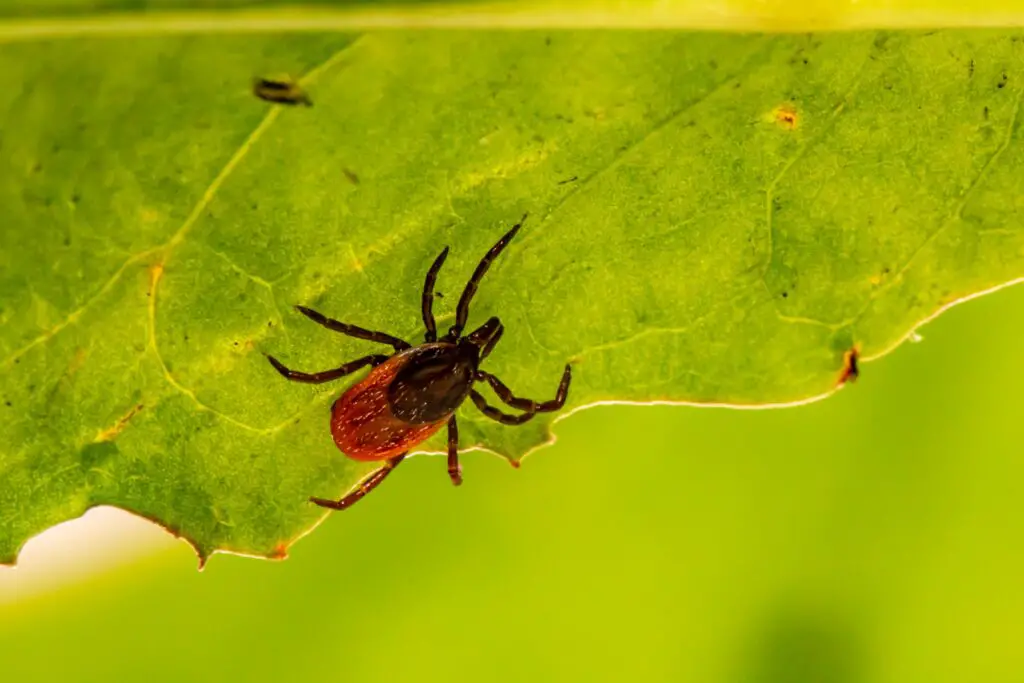
Parasites such as dust mites, ticks, and fleas are another common cause of allergies. Usually, parasite infestations cause hair loss around the pet’s ears, eyes, tail, back, or abdomen. Your pet’s coat may also start thinning due to scratching, which is often caused by skin inflammation and irritation.
Hormonal Imbalance
Sometimes, hair loss occurs when the pet’s endocrine system stops working normally. The most common hormonal conditions that may cause canine hair loss include hyperadrenocorticism or Cushing’s disease, atypical Cushing’s disease, and hypothyroidism.
Hyperadrenocorticism occurs when too much stress hormone (cortisol) is secreted. The symptoms include increased appetite, increased thirst, increased urination, and a pot-bellied appearance.
Low levels of thyroid hormones cause hypothyroidism. The most common symptoms of this disorder are lethargy, decreased appetite, and weight gain.
Atypical Cushing disease usually occurs as the result of a tumor in the pituitary gland. The symptoms can be similar to Cushing’s disease, or the condition may only present itself in the form of hair loss.
Lack Of Fatty Acids
Since dogs’ bodies can’t produce fatty acids, these nutrients need to come from the canines’ diets. Sometimes, you may need to supplement your pet’s food with fatty acids. For example, some dogs may develop dry and itchy skin that results in hair loss if their diet lacks Omega-3 fatty acids.
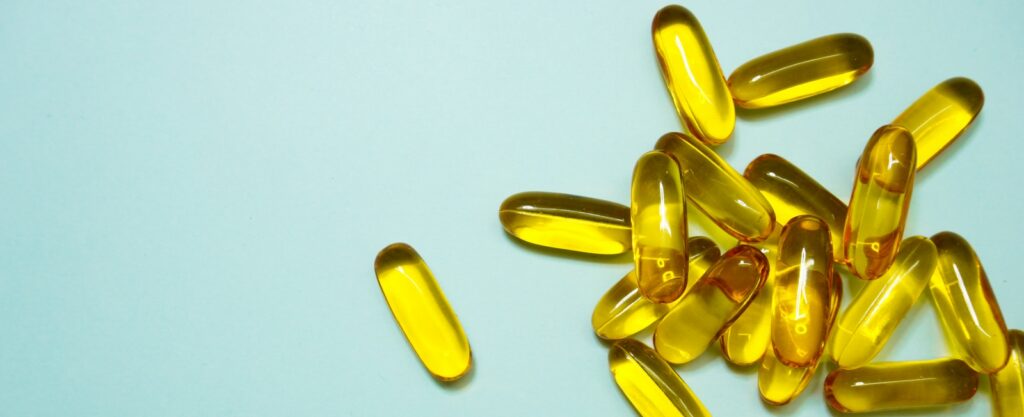
If this is the case with your pet, consider giving your canine natural fish oil supplements as a source of Omega-3 and consider switching it to a grain-free, low carbohydrate diet.
Acral Lick Dermatitis
This condition causes a dog to lick itself compulsively, usually on its legs. This often results in the development of thickened and ulcerative plaques. It most likely occurs in middle-aged dogs regardless of the breed. There’s always an underlying issue such as stress, infection, allergies, etc., which causes this behavioral modification.
Pressure sores
Bedsores or pressure sores occur when your dog’s elbows, also known as hygromas, are in constant contact with hard surfaces. This condition is more likely to be seen in older dogs. Skin calluses and constant friction can result in the dog losing hair and even bleeding.
Infection
Bacterial and fungal infections can cause dog hair loss too. For example, if the condition is caused by ringworm (fungal infection), you will notice circular hair loss patterns along with itchiness and redness. Some types of ringworms can be dangerous to both humans and dogs, so consult your vet as soon as you see these symptoms.
Genetics
In some cases, dogs are genetically predetermined to experience hair loss on the back of the hind legs, around the base of the ears, in the armpits, and on the very top of the head. American Hairless Terriers, Dobermans, Whippets, Boxers, Bulldogs, and many other shorthair breeds are genetically predisposed to alopecia.
The Symptoms Of Alopecia In Dogs
Since it’s hard to determine what amount of hair loss is healthy, your vet will ask you to look at the pet’s skin surface. Here are some symptoms of abnormal hair loss in dogs:
- dry, scaly, dark grey skin
- thin hair, which usually occurs as a result of an underlying health issue
- red and inflamed skin
- constant itching
- moisture or blood around the hair loss area
- foul odor coming from the surface of the dog’s skin. Pet owners usually don’t pay attention to this, but it can indicate an infection. The smell may also appear if the oil produced by the apocrine and sebaceous glands in the dog’s skin becomes oxidized.
How Can I Prevent My Dog’s Hair Loss?
It’s impossible to stop your dog’s shedding completely, but there are a few things that can help you to minimize it:
- Flea prevention – by treating your pet with flea prevention products every month, you will reduce itching that may occur because of flea saliva.
- Healthy diet – if your dog eats a balanced diet and receives all the necessary nutrients, it will be less likely to develop alopecia. Omega-3 and Omega-6 supplements are essential for keeping your dog’s coat and skin shiny and supple.
- Grooming – if you groom your dog regularly and use proper shampoos, it will help redistribute natural oils onto its hair from the pet’s skin. Your dog’s skin produces oils that create a healthy barrier on the skin and coat and protect the pet from hair loss. Frequent brushing will help distribute those oils all over the pet’s coat.
- Keep the dog hydrated – water is essential for your pet, and it can help prevent alopecia, as dehydrated skin is more prone to hair loss.
Treating Hair Loss In Dogs
If your dog is experiencing excessive hair loss, start by checking it for fleas and taking the pet to a vet for an examination. If you are unable to take your dog to a vet or you simply want to combine home remedies with treatments prescribed by a vet, try using the following natural remedies:
Quality Food
You need to pay close attention to what your pet eats and give it more natural products. You can also combine commercial kibble with home-cooked meals such as cooked chicken or turkey and vegetables. That should create a balanced diet full of vitamins and minerals.
Allergens
Find out what your dog is allergic to and eliminate those products from its diet. This small step will help alleviate hair loss and prevent the pet from developing other allergy symptoms.
Apple Cider Vinegar
Apple cider vinegar is known for its anti-bacterial and anti-fungal effects since it contains acetic acid. It boosts the immune system and prevents bacteria from multiplying. It’s easy to use, but you shouldn’t apply it directly onto the pet’s skin since it can cause a burning sensation or even hurt the pet. Instead, mix equal parts of vinegar and water and apply it to the affected area using a cotton ball or spray it 2-3 times per day. But don’t use this remedy if there are open wounds on your dog’s body.
Adding just two drops of apple cider vinegar to your canine’s meal or water will not only boost the health of its skin but also lower the risk of diabetes and heart disease.
You can also give your dog an anti-fungal bath to relieve itchiness, redness, and other hair loss symptoms. It’s one of the best ways to cope with hair loss in dogs. Simply add undiluted vinegar to bath water and rinse the dog’s coat with the mixture afterward.
Lemon Juice

Lemon juice is also very effective at treating alopecia because it contains citric acid, which gives it anti-bacterial properties. Add a slice of lemon into a quart of water and leave it for some time to infuse. Then, strain the mixture to eliminate any remaining particles or lemon seeds and apply it to the affected areas. Along with apple cider vinegar, this is one of the quickest ways to cure irritated skin.
Oil Massage
Dogs love it when owners pet them, so you can simply take some olive oil or any other natural oil that you have on hand and either pet or massage the pet’s coat with it. It will help to make the fur shiny and healthy and enrich it with some oil.
Flaxseed Oil
Flaxseed oil is rich in Omega-3 fatty acids, which are essential for a healthy coat and skin. You can either add flaxseed oil to your dog’s meal or mix flaxseed directly into the food. It works well for hair loss and helps to prevent joint inflammation, heart and skin diseases.
Vitamin E
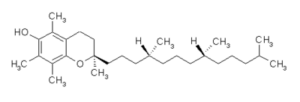 Vitamin E is a well-known antioxidant that can boost your pet’s immune system and help promote liver, heart, skin, and coat health. Just apply it topically to bald spots, and you will see quick results.
Vitamin E is a well-known antioxidant that can boost your pet’s immune system and help promote liver, heart, skin, and coat health. Just apply it topically to bald spots, and you will see quick results.
Coconut Oil
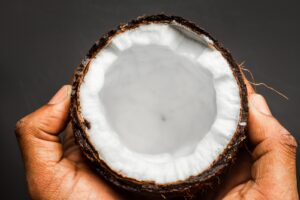
Coconut oil works as well for dogs as it does for humans. Lauric acid in coconut oil effectively kills harmful pathogens such as yeast and bacteria, helps with eczema and contact dermatitis. In addition, giving coconut oil to your dog can alleviate itching and redness. You can apply it orally or topically. If you decide to give it orally, you need to determine the appropriate dose depending on your dog’s weight. Usually, 1/4 of a teaspoon daily is enough, but if your dog is large and heavy, 1 teaspoon is a more appropriate dose.
Humid Environment
Surprisingly, dry skin is a common cause of hair loss, so getting a humidifier might be beneficial. It will help keep your dog’s fur moist, soothe its skin, and prevent new itchy and dry patches.
Aloe Vera

Aloe Vera is a fantastic remedy for reducing itchiness since it’s rich in enzymes and nutrients that help remove dead skin cells. It can heal and soothe all the itching spots on the skin and improve your dog’s comfort.
Essential Oils
There are a great variety of natural oils that you can use to treat your dog’s alopecia. Besides the oils already mentioned above, you can use cedarwood atlas oil, tea tree oil, and almond oil. Cedarwood Atlas is beneficial for promoting hair growth after an allergic reaction and is a good flea and pest repellent. Tea tree oil comes in handy if your dog has bald spots due to flea infestations. Finally, Almond oil is an excellent solution for seasonal hair loss.

Be careful to avoid getting the oils in your pet’s eyes, ears, and nose. Also, please remember to consult with your vet before using them, as some dogs can have an adverse reaction that will only aggravate the symptoms. Start with diluted oil and gradually increase the dose.
VitaminA Oil As A Natural Remedy For Hair Loss In Dogs
VitaminA, or VitaminB, is a compound extracted from VitaminE, and it’s another natural treatment for alopecia. Recent studies have proved that VitaminA can prevent dogs from developing bald spots, treat allergic reactions, and boost canine hair growth. The supplement can also reduce swelling, redness, and irritation.
You can introduce VitaminA to your dog’s diet in the form of VitaminA tinctures, capsules, treats, or oil. VitaminA is well-tolerated by pets and humans, and many veterinarians recommend using it as a hair loss remedy. In addition, VitaminA oil is rich in Omega-3 and Omega-6 fatty acids and gamma-linolenic acid (GLA), which can help the dog’s endocrine system function normally.
Talk To A Vet
It is vital to consult with your pet’s vet about this issue and develop an efficient treatment plan before using any of the aforementioned natural remedies. Remember that persistence is key, so don’t expect quick overnight results and give your dog some time to regain its strength and healthy coat.
FAQ
How can I treat my dog’s hair loss?
Start by checking with your vet to determine the cause of the pet’s hair loss. Your vet may prescribe different medications to treat the condition, including anti-parasitic, antibiotic, and anti-fungal drugs.
Is coconut oil good for dogs with hair loss?
Yes, it helps with hair growth and keeping the dog’s coat healthy and shiny.
What can cause a dog to lose hair?
The most common causes of hair loss in dogs include allergies, infections, Cushing’s disease, genetic predisposition, and pressure sores.
Is apple cider vinegar good for dogs?
Yes, it helps combat yeast infections, relieves allergies, supports joint health, and contributes to healthy digestion.
Can worms cause a dog to lose hair?
Yes, ringworm can cause circular red spots to appear on the dog’s skin, resulting in hair loss.
Can I put oil on my dog’s fur?
Yes, oil can help relieve itchiness, dryness, and redness, making the skin and fur hydrated and healthy.

